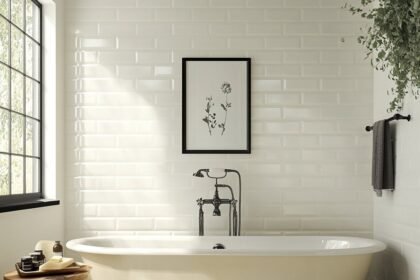Do you dream of a beautiful garden but dread the constant upkeep? You’re not alone! Many homeowners want a stunning outdoor space without spending all their free time maintaining it. The good news is, creating a low-maintenance landscape is entirely achievable. In this article, we’ll explore practical tips and tricks to help you design a garden that’s both attractive and easy to care for, so you can enjoy more leisure time and less labour.
1. Plan Your Landscape Design
Start with a Solid Plan
A well-thought-out design is the foundation of a low-maintenance garden.
- Assess Your Space: Observe sunlight patterns, soil type, and existing features.
- Define Areas: Decide on functional zones like seating areas, play zones, or vegetable patches.
- Simplify Shapes: Use simple geometrical shapes for lawns and beds to make mowing and edging easier.
Question for you: What activities do you want to enjoy in your garden?
2. Choose the Right Plants
Opt for Native and Drought-Tolerant Plants
Selecting the right plants reduces the need for watering, fertilising, and pest control.
- Native Plants: They are adapted to your local climate and soil.
- Drought-Tolerant Species: Require less watering, ideal for dry regions.
- Perennials Over Annuals: Perennials come back every year, saving you replanting time.
Example: Lavender and ornamental grasses are hardy choices that add beauty without fuss.
3. Reduce Lawn Areas
Minimise Grass for Less Mowing
Lawns can be high-maintenance with regular mowing, watering, and fertilising.
- Alternative Ground Covers: Use low-growing plants like thyme or clover.
- Hardscaping: Incorporate patios, pathways, and gravel areas.
- Artificial Turf: Consider synthetic grass for a green look without upkeep.
Tip: Replace unused lawn areas with flower beds or seating spaces.

4. Use Mulch Generously
Mulch is Your Garden’s Best Friend
Mulching offers multiple benefits that reduce maintenance.
- Weed Suppression: Mulch blocks sunlight, preventing weed growth.
- Moisture Retention: Keeps soil moist, reducing the need for watering.
- Soil Improvement: Organic mulch breaks down and enriches the soil.
Imagine: A garden bed covered in bark mulch, keeping weeds at bay and plants thriving.
5. Install Efficient Irrigation Systems
Automate Watering
An efficient irrigation system saves time and conserves water.
- Drip Irrigation: Delivers water directly to plant roots.
- Soaker Hoses: Ideal for garden beds and borders.
- Smart Controllers: Adjust watering schedules based on weather conditions.
Scenario: A drip system ensures your plants get the right amount of water even when you’re away.
6. Group Plants by Water Needs
Create Hydro Zones
Planting species with similar water requirements together simplifies irrigation.
- High-Water Zones: For plants needing regular moisture.
- Low-Water Zones: For drought-tolerant species.
- Separate Irrigation Lines: Tailor watering schedules for each zone.
Question for you: Could grouping plants make your watering routine more efficient?
7. Incorporate Hardscaping Elements
Less Greenery, Less Maintenance
Hardscaping reduces the amount of plant care required.
- Patios and Decks: Extend your living space outdoors.
- Walkways and Paths: Use gravel, pavers, or stones.
- Rock Gardens: Add visual interest without the upkeep.
Example: A stone patio with potted plants offers beauty with minimal care.
8. Choose Low-Maintenance Materials
Durable and Easy-Care Options
Select materials that withstand the elements and require little upkeep.
- Composite Decking: Resists rot and doesn’t need staining.
- Metal or Vinyl Fencing: Long-lasting and doesn’t require painting.
- Concrete or Stone Pavers: Durable surfaces for paths and patios.
Tip: Quality materials may cost more upfront but save time and money in the long run.
9. Use Weed Barriers
Keep Weeds at Bay
Preventing weeds reduces the time spent on garden chores.
- Landscape Fabric: Blocks weeds while allowing water penetration.
- Thick Mulch Layers: Acts as a natural barrier.
- Ground Covers: Dense planting crowds out weeds.
Imagine: A weed-free garden that lets you relax instead of pulling weeds.
10. Limit High-Maintenance Features
Simplify Your Garden
Avoid features that require frequent care.
- Water Features: Ponds and fountains need cleaning and maintenance.
- Delicate Plants: Avoid species prone to pests or diseases.
- Complex Designs: Intricate patterns may be harder to maintain.
Scenario: Choosing a simple, elegant design over a complicated one saves time and effort.

Summary Table
| Tip | Key Actions |
| 1. Plan Your Landscape Design | Assess space, define areas, simplify shapes |
| 2. Choose the Right Plants | Use native, drought-tolerant, and perennial plants |
| 3. Reduce Lawn Areas | Minimise grass, use ground covers, hardscaping |
| 4. Use Mulch Generously | Suppress weeds, retain moisture, improve soil |
| 5. Install Efficient Irrigation | Use drip systems, soaker hoses, smart controllers |
| 6. Group Plants by Water Needs | Create hydro zones, tailor irrigation |
| 7. Incorporate Hardscaping Elements | Add patios, paths, rock gardens |
| 8. Choose Low-Maintenance Materials | Use durable, easy-care materials |
| 9. Use Weed Barriers | Apply landscape fabric, thick mulch, ground covers |
| 10. Limit High-Maintenance Features | Avoid complex designs, delicate plants, water features |
Conclusion
Creating a low-maintenance landscape doesn’t mean sacrificing beauty or enjoyment. By planning thoughtfully and making smart choices, you can design a garden that suits your lifestyle and frees up your time. Imagine spending more moments relaxing in your garden rather than working in it! So, are you ready to transform your outdoor space into an easy-care oasis?
FAQs
Native plants, drought-tolerant species like succulents, and perennials are excellent low-maintenance choices.
Use drought-tolerant plants, install drip irrigation systems, mulch garden beds, and group plants by water needs.
Artificial turf requires minimal maintenance and stays green year-round, but it can be expensive to install and may not feel like real grass.
Mulch suppresses weeds, retains soil moisture, and improves soil health, reducing the need for weeding and watering.
Absolutely! By choosing the right plants, materials, and design elements, you can create an attractive garden that requires minimal upkeep.





